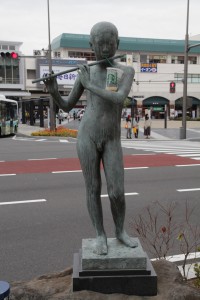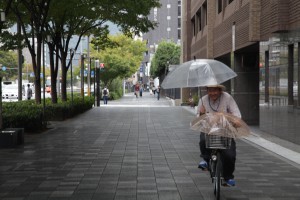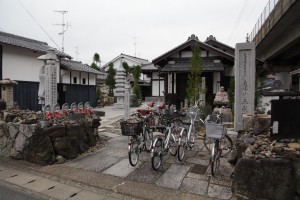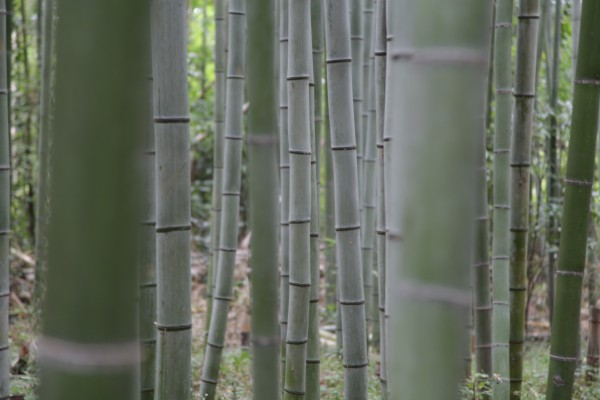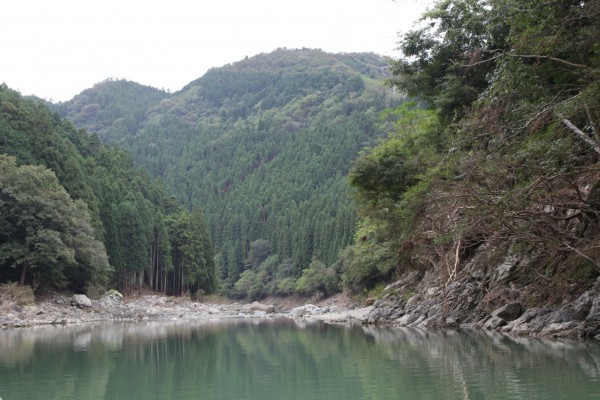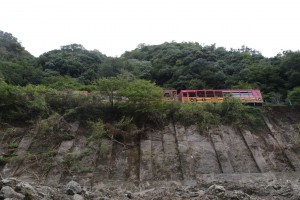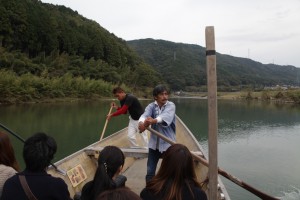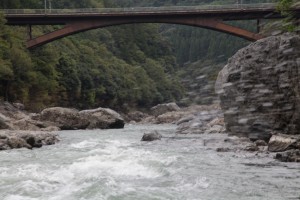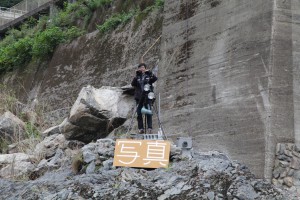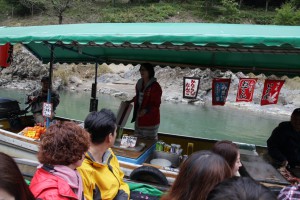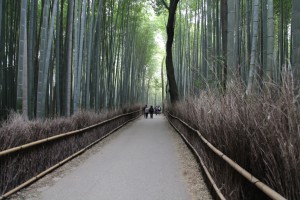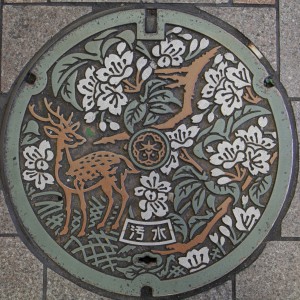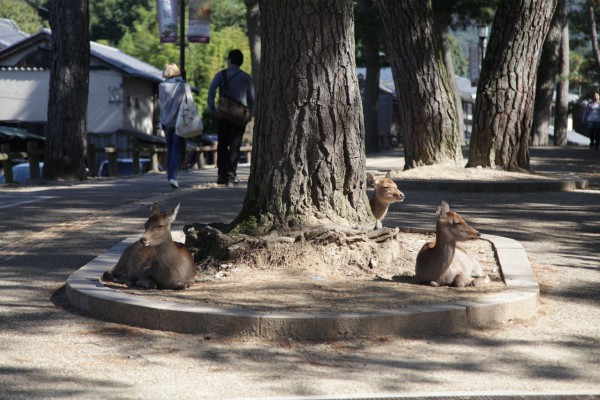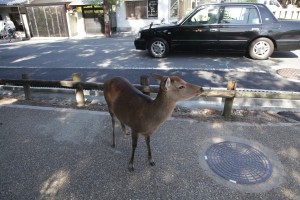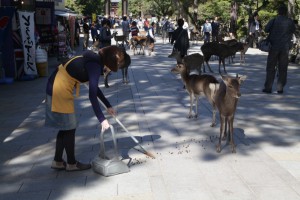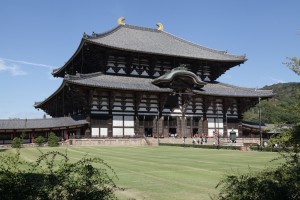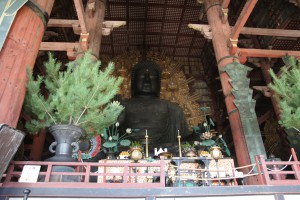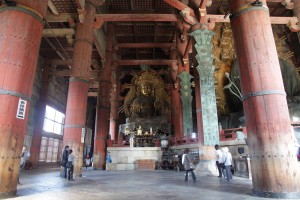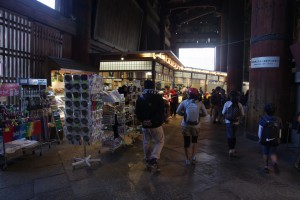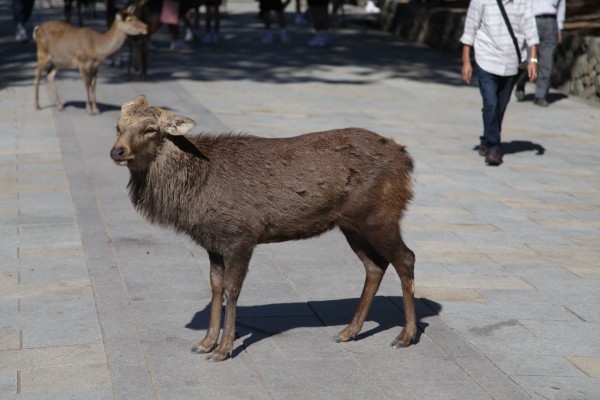Author Archives: mdw
Spent some nights in Matsumoto / Sleeping on the matted ground
I’m in Matsumoto now, staying at a ryokan and enjoying the cool, clear mountain air. Yesterday afternoon I checked in, had some tea and a little cake thing at one of those low tables in my room, and went out to dinner at a yakitori place (i.e., meat onna stick, but not at all Dibbler-like). I had an ukokkei rice bowl with local aizujidori chicken, chicken skewers with plum sauce, and shikoasa. There was also something in a small bowl that I couldn’t figure out. Mighta been tofu.
The ryokan is an 80-year-old, three-story house with creaky wooden floors and traditional guest rooms with futons and tatami mats. But it’s not too traditional, because the baths are private and you have your choice of Japanese or Western toilets.
The pillow is odd—it’s filled with rice husks—but not bad, and the futon is quite comfortable. The tatami mats have a nice feel when you walk on them barefoot. I had some trouble with the slippers because they were too big and kept falling off. After reading Dave Barry in Japan, I expected the opposite problem. Now I’ve learned to push my feet through far enough to grip the ends with my toes. American ingenuity!
Culinary note: Shikoasa is described as Okinawan citrus wine, but it tastes more like hard liquor. I had two of them, but still managed to find my way back to the ryokan.
Bicycles
So far I’ve only noticed this in Kyoto, but a lot of people ride bikes, and all of them ride on the sidewalk. Riding in the street would probably be suicide. Some of the wider sidewalks have bike lanes, but both cyclists and pedestrians completely ignore them and go wherever they want. It doesn’t seem to cause any problems.
Even if some of the riders look a little shaky.
All of the bikes look like girls’ bikes circa 1960. They have fenders and baskets and little bells. a lot of them even have center kickstands like in this photo.
Incidentally, most of those bikes are unlocked. People rarely lock them, even in downtown Kyoto, and when they do, they never lock them to anything.
Arashiyama Bamboo
Along the Hozu-gawa
Down Hozu River
Raging torrents and breathtaking ravines at times dousing you with water, at others passing in calmness.
So my brochure says. Arashiyama is a very touristy town just outside of Kyoto and from there I took a tourist train up the Hozu river gorge to Kameoka.
I think Kameoka means “turtle orchestra,” although my Japanese is not strong.
On the bus ride (almost as long as the train ride) from the train station to the dock, I talked to Mike and his son Shane from San Clemente. Mike had lived in Japan as a child and this was his first time back. Apparently it’s changed some since 1967.
We finally got to the boarding site and took off down the river.
The rapids were fearsome!
Okay, they really weren’t. Pirates of the Caribbean is probably scarier. Still, a person could do worse than floating down a lushly forested river gorge, even if a person is having a little trouble keeping the camera dry.
This guy was offering photos for ¥1575.
Near the end, another boat pulled up alongside us and offered food, including beer, sake, and grilled squid.
I opted for walking into town and getting chicken skewers and anpan instead.
There’s a famous bamboo forest there too. It’s a short walk, but impressive. I skipped the associated temple.
Nara Manhole Cover
Nara Street Scene
Nara
Stop the presses! According to some of this blog’s more persnickety readers, the creature in the previous post was in fact a deer. Your blogger has never claimed to be an expert in taxonomy, and did not even know that deers and yaks were related.
Point being that you can find darn near anything wandering the streets—deer, yaks, moas, poodles, you name it—so it pays to be careful.
Anyway, these friendly mammals are all over the place in Nara, and they’re friendly mainly because people keep feeding them, which they’re able to do because there are stands everywhere selling crackers to feed to the deer. And it will not surprise you to learn that there is a temple involved.
So people flock to Nara to see the deer (and the temple) and spend money to feed the deer.
This also provides jobs for industrious citizens.
The temple, Todai-ji, is billed as the largest wooden structure in the world, even though it isn’t anymore. And it contains the largest Buddha statue in Japan.
I haven’t seen any other Buddha statues to compare it to, but it does indeed seem pretty large. There’s another statue next to it, which is not as large, but is still pretty large. You would probably comment on how large it was if the Buddha statue weren’t even larger.
Also, there’s a gift shop In the temple.

